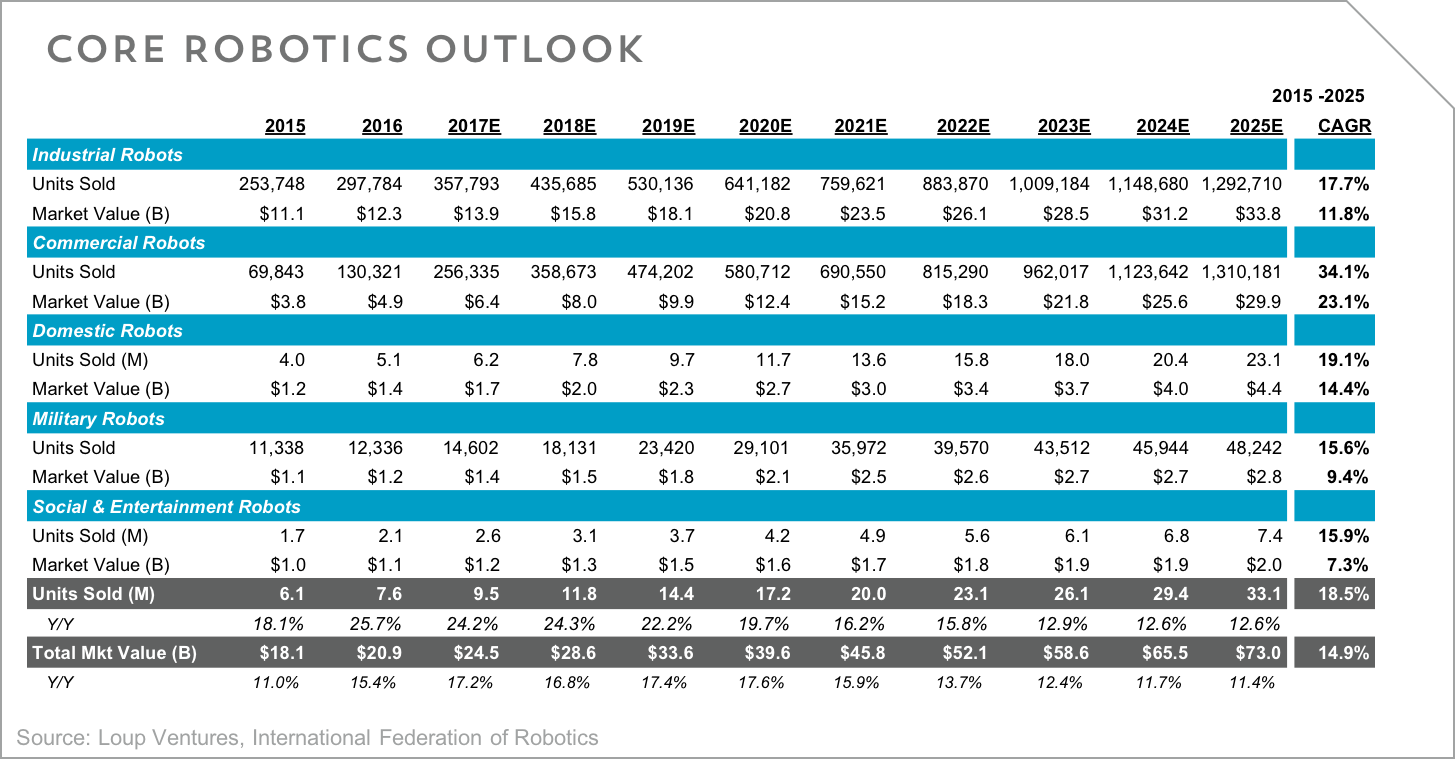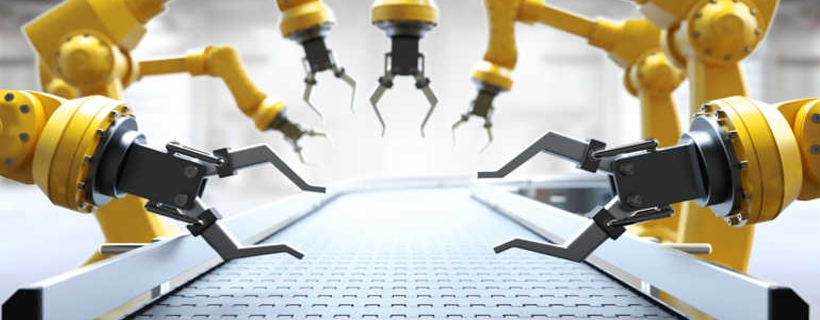This is the first of a six-part series we’re publishing on the future of robotics. Every day next week, we’ll publish a detailed outlook on a category within the robotics market including details on our thesis, outlook and market size for each category.
See other notes in our Robotics Outlook 2025 series here:Industrial, Commercial, Domestic, Military, Entertainment.
A cultural shift is underway and robots are playing an increasingly crucial role in our everyday lives at work and at home. Due to advances in computer vision, artificial intelligence and cloud computing, robots are now capable of performing advanced tasks and operating in challenging environments. Robotics will be one of the core drivers creating the next wave of technology. In this six-part series we take an in-depth look at the global robotics market and identify specific catalysts that will drive growth through 2025. We look at the robotics market in 5 distinct categories:
- Industrial: Robots used in manufacturing applications in verticals such as automotive, electronics, metals and machinery, and plastics and rubber.
- Commercial: Robots used in all commercial applications outside of manufacturing including warehousing, healthcare, agriculture, construction, security and public safety.
- Domestic: Robots used to perform household chores; for example, vacuuming, mopping and mowing.
- Military: Aerial, ground and marine robots used in intelligence surveillance and reconnaissance (ISR) applications, bomb disposable and cargo transportation.
- Social and Entertainment: Robots used as toys or personal companions.
Robotics Market to Grow to $73B By 2025
Based on International Federal of Robotics (IFR) data and Loup Ventures estimates, we believe the aggregate robotics market grew 15.4% in 2016 to $20.9B. In the coming years we anticipate growth to accelerate and believe the robotics market can grow to $73.0B by 2025, representing a 14.9% CAGR. Note that our forecasts only factor in hardware sales and do not account for software or other supporting services. When factoring in these additional costs, we believe the market value could be about 3x larger. Within the five categories outlined above, we believe 7.6M robots were shipped in 2016 and believe over 33.0M units will be shipped in the year 2025, which represents a 18.5% CAGR. While most of the units shipped will be in the form of domestic, social and entertainment robots, we anticipate at least high-teen unit growth throughout all five categories.

Investing in the Theme
Unmanned vehicle traffic control systems for air, sea and ground will be an important element to widespread adoption of robotics that function without human supervision. While the drone market is fragmented, an air traffic management program will need to have a single or at least very few winners for it to be effective. Similar tracking systems should also be in place for marine and ground based vehicles. We see this as the biggest opportunity in the unmanned vehicle space. In fact, a system that works for land, sea and air vehicles in conjunction may be the ultimate future to enable real-time, in transit delivery for a just-in-time world.
Bottom line: We believe growth in robotics will be driven by broad adoption across all five categories and the fastest growing markets will include commercial, domestic and industrial robots. That said, many robotics markets are still in the early innings and we expect multiple investable markets to emerge in the years to come. We’ll dive deeper into the specific forces driving demand in these five categories throughout this series, but we believe the common denominator driving growth in each category will include rising market awareness, cultural acceptance, favorable regulation, lower robot costs, and improved functionality. We believe that improving robot functionality – including rapid advancements in robot control software – will be one of the leading catalysts, which is going to be dependent on advancements in artificial intelligence, computer vision and cloud computing.
Next: Industrial Robots
In our next piece, we’ll dive deeper into the industrial market where the rise of collaboration robots (co-bots) is already underway.
Austin Bohlig contributed to this note.
Disclaimer: We actively write about the themes in which we invest: artificial intelligence, robotics, virtual reality, and augmented reality. From time to time, we will write about companies that are in our portfolio. Content on this site including opinions on specific themes in technology, market estimates, and estimates and commentary regarding publicly traded or private companies is not intended for use in making investment decisions. We hold no obligation to update any of our projections. We express no warranties about any estimates or opinions we make.
